Ever been on a roller-coaster ride? It’s scary and exciting at the same time. So is email marketing. Did you think I was going to rant my roller-coaster story here? No. I’ll try sticking to the topic.
Chances are, you’re a little bemused about the whole lead nurturing process via email marketing. In simple words, you can develop a relationship with your potential customers (or leads) by providing them with the information they are seeking.
Let’s jump on to the main part. Here are the six steps to nail the lead nurturing process with email marketing.
Table of Contents
STEP 1: Qualifying Leads into Potential Prospects
When someone visits your website and submits a lead capture form what do you ask them? Their location? Profession?

(Source)
Asking for the right information in accordance with your business goals can help you to hit the bull’s eye. Consider it the first touchpoint for lead generation. Moreover, this initial information can make or break your reputation.
For example, suppose, you are working for a supply chain enterprise solution. If someone is interested in your software, they need to sign up on your website.
Wendy is in the logistics department of her company and is researching for some of the best supply chain software in the market. She is signing up for your website.
But you do not know the above-mentioned details about your visitor.
What information will you ask from your visitor? Clearly, age and gender are not meeting your exact goals. Rather, you would be more interested in knowing the industry, company, or department along with the geographical location of your visitor.
If we take a second example: let’s suppose you have an online shopping website for clothing and apparel. Here, your priority will lie in knowing about their gender and age, so that you can show them relevant content.
This is the first touchpoint of communication with your visitor. You would want to leverage a logic-driven approach so you can complete the process of qualifying a lead or generating leads.
All this can help you to know the lead’s behavior and interest and as a result, determine the lead’s buying stage. One thing to remember is, don’t overdo it.
In most cases, opt-in forms shouldn’t have more than 2-3 fields. According to a case study carried out by MarketingSherpa, in a lead generation process, “one additional form field decreased conversions to up to 11%”
Instead of focusing on how much you can get out of your subscribers, focus on how much you can give them. Make sure to give them something in return. For instance, a free ebook, or resources.
And while I was researching lead generation stats, I found that “Fewer than 10% of salespeople said the leads gotten from marketing are high quality”.
Qualifying a lead into potential prospects can also be done on the basis of lead scoring. You can keep track of the web pages from where the visitor signed up, how they interact with your website, what emails they’re opening, etc. Based on that information, you can score them to identify the most to least valuable prospects.
This is essential because if a visitor signed up from a resources section, let’s say blog post or white paper, he or she might have an interest in your brand. But if the visitor signs up from the pricing page, he or she may have higher buyer intent.
You have to be careful when deciding what to ask from your visitors. Make sure you get the maximum information with the fewest number of fields. It doesn’t mean that you can increase your number of fields in the form, rather, aim for getting multiple details from one field.
For instance, if you have asked for the phone numbers of the visitors, you will have two aspects of information. One is their personal contact number, second is their geographical location as it contains the pin code. If you had asked only the location of the visitor, you might have missed out on their contact details.
Once this process is done, you may move forward to the next step to nurture leads with email marketing.
STEP 2: Segmenting your Leads into Target Groups
This is an essential step in the lead nurturing process and can save you a lot of time. Segment your leads based on the criteria that are important to you such as age, gender, geographical location, occupation, industry, or more.
After initial segmentation, use progressive profiling to achieve hyper-segmentation. This is done based upon the collected data, preferences, or past activity of your subscribers.
Another thing that I must highlight is you should never buy an email list. You’ll not only be breaking laws but also be labeled as a spammer. It’s not worth it.
Let’s take an example to understand the segmentation process better.
Suppose you have a local online fashion store in California. How will you create segment lists to ensure that each subscriber receives the content that resonates with them?
You can segment your list on the basis of age, gender, and cities in California.
- Female subscribers between the age of 20-25 living in San Diego
- Male subscribers between the age of 20-25 living in San Diego
- Female subscribers between the age of 40-45 living in Santa Clara
- Male subscribers between the age of 30-35 living in Los Angeles
You get it, right?
Create as many segments with as many criteria as you need. Keep in mind that the more segments you have, the more complicated things will become. If you’re new to segmentation then three or four different segments are a good starting point. Test out different segments until you find the groups that resonate the most with your messaging and products.
The focus should be on getting to know your prospects well. You’ll deliver better content, the customer would want to come back, you will get more details, and you can move on to hyper-segmentation. It’s a virtuous cycle.
Segmentation can also help you send bulk emails without spamming your subscribers. If you are sending out the most relevant content according to your niche, chances are, you would never hit their spam box.
Furthermore, segmenting your email base continues as you keep sending emails. Keep a tab on which content got their interest, or which products showed maximum engagement. And then you can separate the users who bought your product versus those who haven’t.
You can also segment your list based on the user’s sign-up date. You cannot send the ‘same email’ to those who are a part of your email list for one year, compared to those who have completed a month. Because they have different buyer’s journeys. You may use the ‘same content’ but they should be kept in different email lists.
Beyond this, you may send targeted campaigns and track the results to further segment your audience. You may also include survey emails to find the interests of your subscribers.
It’s also super important to clean up your segmented list. That means regularly giving it a good look-over. Remove any folks who haven’t been engaging with your emails, fix any mistakes in your data, and make sure your segments are still on point.
For example, let’s say you have a group of subscribers who are into outdoor stuff. Check in now and then to see if they’re still all about hiking and biking or if some of them have started getting into camping gear.
With this, let’s move on to the third step to nurture leads through email marketing.
STEP 3: Leverage Automation to Establish Relationships
Once you have placed your leads into specific segments, it’s time to leverage automation to get the most out of your email marketing strategy for nurturing your leads. Automating your emails ensures that you keep the conversation going and that you never miss an opportunity to interact with your prospects.
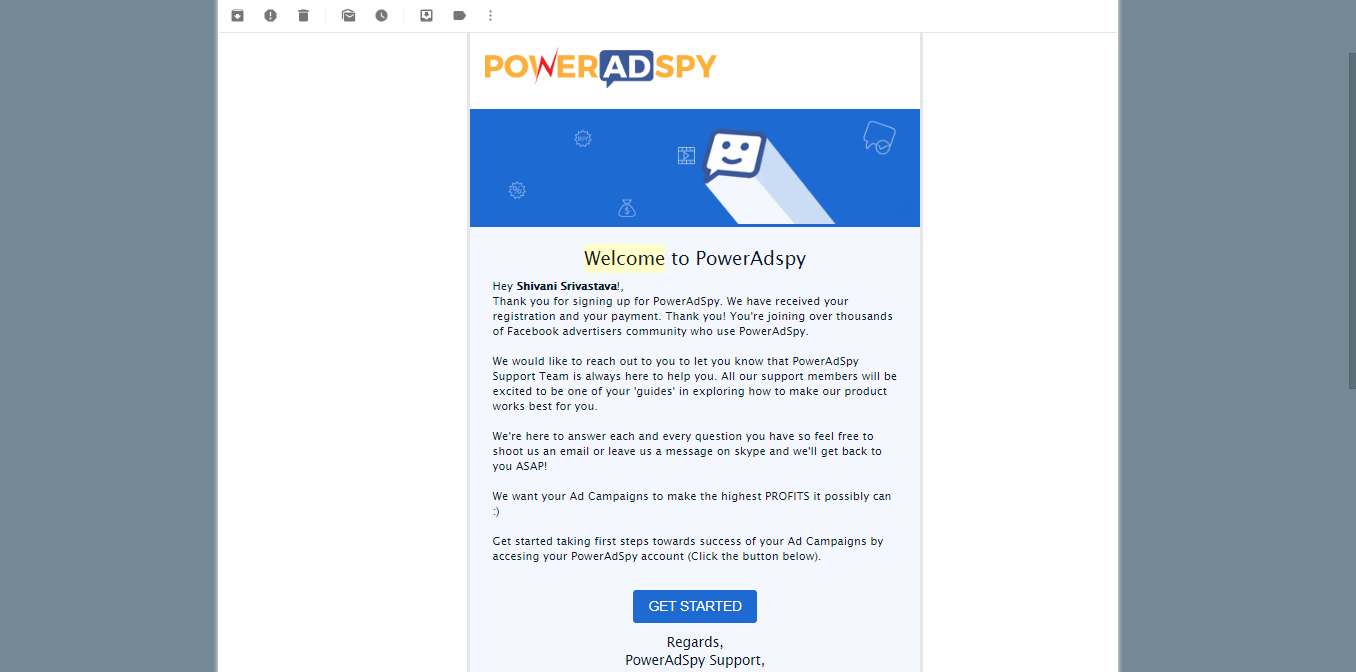
(Screenshot of welcome and post-purchase email from my inbox)
For instance, marketers usually use automation for sending welcome or thank you emails once a visitor signs up on your website. Other examples include:
- First-time discount or coupon
- Free ebook or resources
- A birthday wish (if you have that detail)
- National holiday wishes
- Cart abandonment emails
- Onboarding emails
- Customer review emails
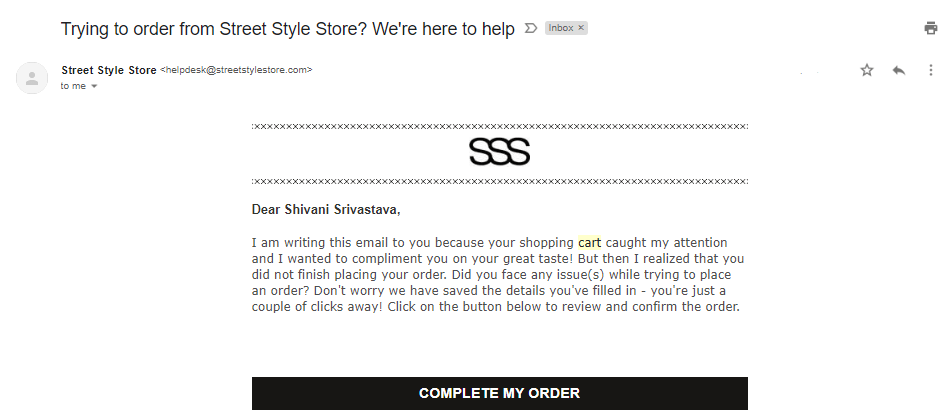
(Example of Cart Abandonment email)
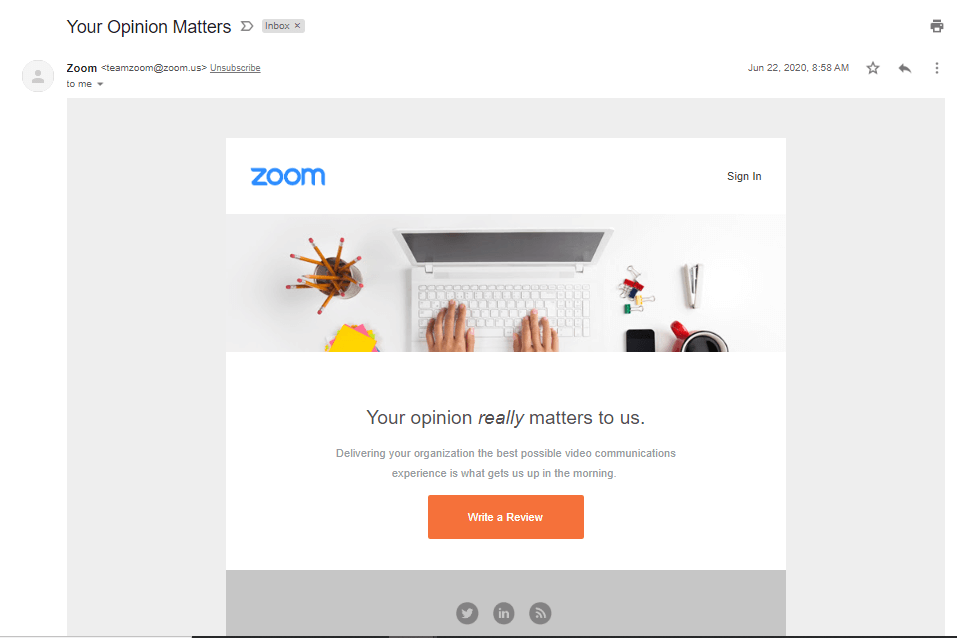
(Example of a customer review email)
But it doesn’t mean that you’ll set your workflow and you are done with it.
Email marketing automation gives you ample opportunities to dive deeper. You can observe, understand, and analyze your prospect’s behavior. You can also keep track of the email metrics like open-rates, click-through rates, bounce rates, and more.
From there, you can apply the elements of design thinking to better tailor your messages to meet their needs.
Of course, analyzing the email automation metrics comes at a later stage. You want to start with running a drip campaign that leads prospects through the stages of awareness, consideration, and decision-making.
The awareness stage usually entails educational content through which the lead identifies their pain points. Your job is to bring their problems on the surface and keep your brand on top of mind. For this, try sending ‘How-to’ videos and blog posts.
The consideration stage is meant for providing necessary information to your prospects to help them make a final decision. They are considered to be aware of their problems and you try to solve it by giving away your premium content. Therefore, send them high-quality resources, like white papers, ebooks, case studies, newsletters, or conduct a short webinar.
The decision-making stage is where you nudge your customers to your product more explicitly and ask for the sale. For this, you can send discounts, free trials, product demo videos, or more.
Taking the example of Todoist, here’s a snapshot of my inbox. Todoist has been sending me emails on a daily basis. I signed up on their website quite recently. They are sending me blog resources and encouraging me to make my to-do lists through Todoist for free.

When I completed my consideration stage, I started receiving their product pitches. Here are some examples from each stage of my journey.
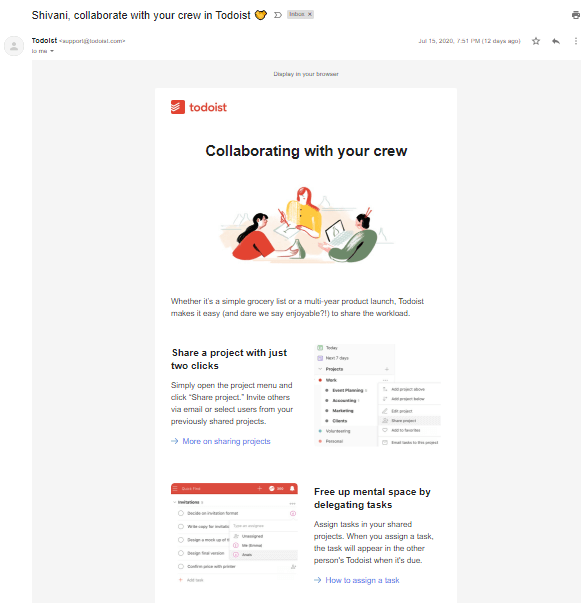
(Awareness Stage)
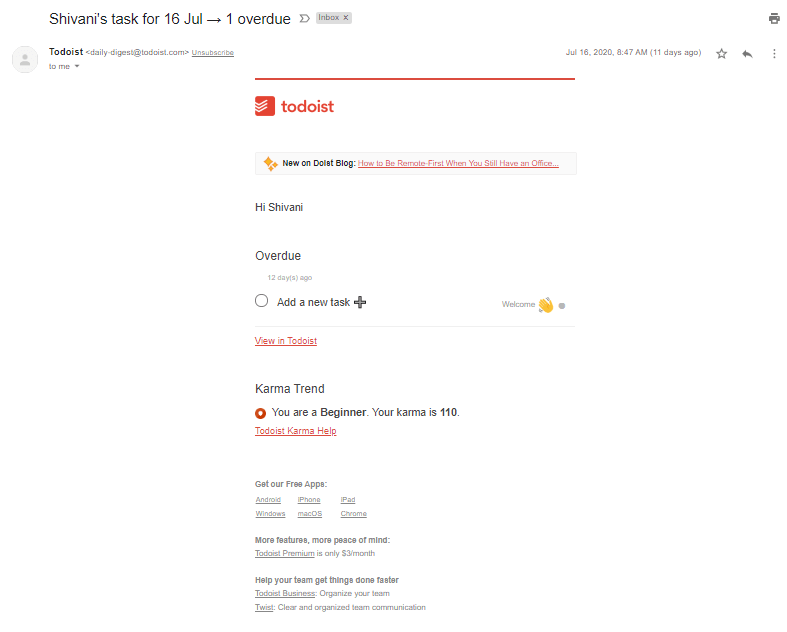
(Consideration Stage)
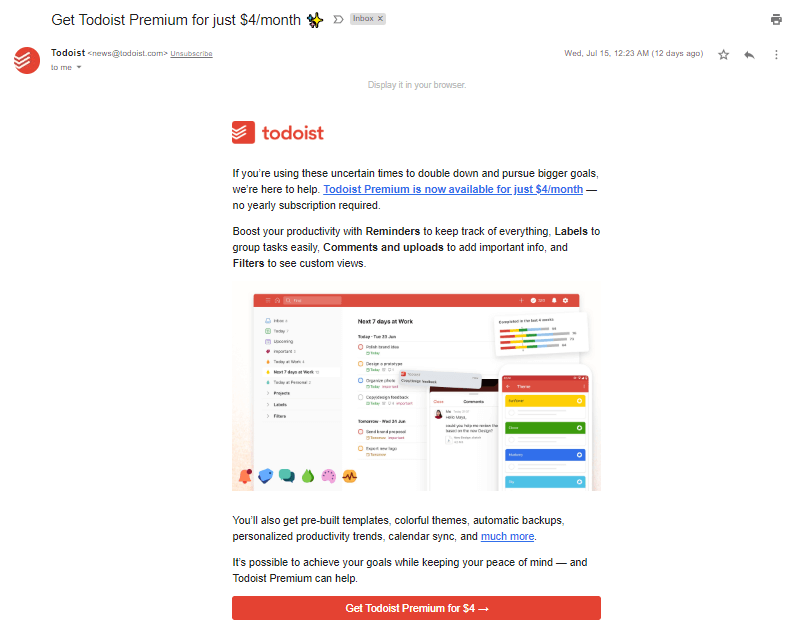
(Decision Making Stage)
STEP 4: Creating Personalized Messages
This is the step where most of your hard work in segmenting your email base comes in handy. You have already created defined target groups based on different factors.
If you can’t create content that resonates with your target groups, it’s all for nothing. Instead of creating a brand new message, focus on personalizing it.
Here’s an example.
Remember the earlier example? You ran an online fashion store. Suppose you are writing an email to your prospects. Use the same copy with a few tweaks according to your niche. For instance, change the name of the city and put different banners and images of clothing that resonates with their age group.
Adding a talking avatar to personalized emails can take engagement to the next level, especially when tailored to match different audience segments’ preferences and demographics. Smart marketers are finding that a well-designed talking avatar helps bridge the digital gap, making automated messages feel more like one-on-one conversations with a real person.
When paired with targeted content, these animated spokespersons can boost click-through rates by giving each email segment its own unique brand personality.
If you want to see the wonders of your content, try A/B testing. Self-conducted research helps you to gain in-depth knowledge about your prospect’s behavior.
Run A/B testing on two different segment lists. Let’s say:
- One list entails females between the age of 25 to 30, from San Diego
- The Second list contains the females from the same age bracket but from Los Angeles.
Send your email with different subject lines and banner images according to the cities they belong to.
This works best if you send out bulk email blasts to your email subscribers. The more, the merrier. But of course, without spamming them.
The point is to test which content works best. Once you receive your results, you may try putting the winning content into practice for your next email campaign. Here’s one example of A/B testing from Invision. Only slight changes and nothing more.
STEP 5: Analyzing Lead’s Behavior Through Email Metrics
Many times you do not understand the reason behind your emails not performing well. Analyzing your email metrics can help you find the loopholes in your lead nurturing strategy.
Statistics say, 65% of marketers from B2B companies are struggling to generate enough quality leads to fill the pipeline. Moreover, because of a lack of relevant nurturing sequences, 79% of marketing sales never convert to customers.
So if you do not want that to happen, keep a tab on your email marketing metrics. At times, the problem is not associated with your content, but your quality of leads.
This step also helps you analyze your lead’s behavior. For instance, which content did they respond to the most, which email got the most open-rates sent at a particular time, which subject line worked well for you during A/B testing, and more.
This analyzation process can help you set benchmarks for your next email campaign. Generally, most marketers depend upon a third-party email service provider to get a detailed analysis of their email campaigns. They have specialized dashboards to show you the results for open rates, click-through rates, bounce rates, heat maps, and more.
The second touchpoint is the quality of your content. Chances are, you may get a good number of open rates, but no click-through rates. If this happens, you might want to consider a deeper evaluation of your email content strategy.
STEP 6: Rearranging and Cleaning your Email List
The last step to nurture your leads via email marketing is to clean up your segmented list. I told you. It is a process that runs in circles.
You put in so much into generating leads, creating your target groups, automated emails, tailored content, and optimizing your send-time according to different time-zones. You even tracked your email metrics. After all this, you would not like to put in extra time and effort to send emails to non-responsive subscribers, right?
If you send emails after cleaning and rearranging your email base, you will get more enhanced and transparent email metrics with minimal bounce rates, or spam complaints.

(Source)
Over time, many of your leads turn into cold ones because they did not find value in your emails. In order to convert them into warm leads, consider sending a re-engagement email. Here are two amazing examples from Todoist.


That’s it, Folks
Now, wasn’t that a mini roller coaster ride? And some say, what is there in sending emails?
Well, I am sure that now you have a clear picture of the lead nurturing process through email marketing. Let me know your story email marketing journey in the comments below. Call me curious.
A content marketer by heart working with SendX: Email Marketing Software, Shivani is passionate about writing anything in the field of the technological landscape.
 (
( (
(